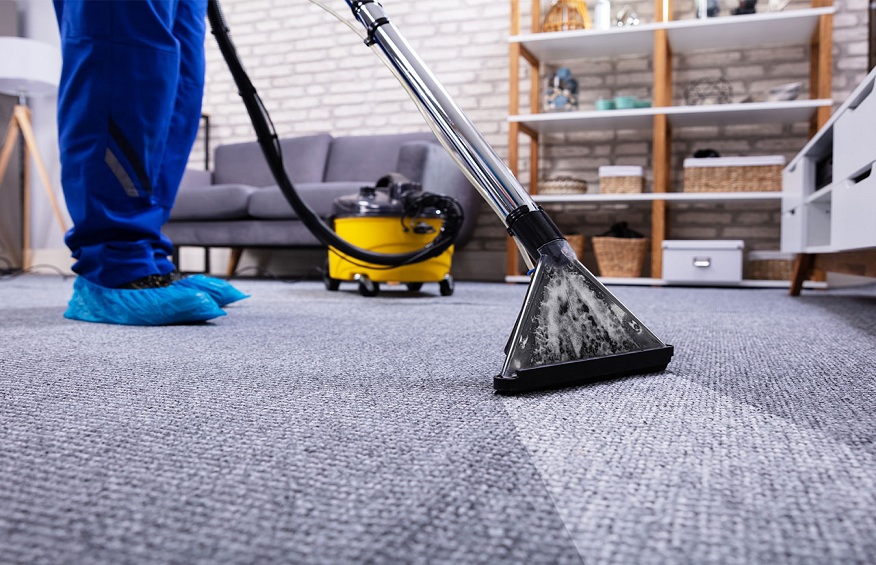Best Practices for Cleaning Office Communal Areas
4 min read
In the dynamic landscape of office environments, communal areas serve as the beating heart of collaboration, relaxation, and shared experiences. Ensuring these spaces remain pristine and inviting is not just a matter of aesthetics but a crucial element in fostering a positive work atmosphere. This article explores the best practices for office cleaning in Ozarks communal areas, emphasizing the unique considerations of this region.
Recognizing the Importance of Clean Communal Areas
Central Hub for Interaction:
- Collaborative Spaces: Communal areas are where employees gather for meetings, discussions, and informal collaborations, making cleanliness essential for a conducive work environment.
- Visitor Impressions: Clean communal areas also leave a positive impression on clients and visitors, reflecting the professionalism of the workspace.
- Employee Well-being:
- Mental Well-being: A tidy and organized communal space contributes to the mental well-being of employees, offering a comfortable retreat during breaks.
- Productivity Boost: A clean and well-maintained environment positively influences productivity and employee morale.
Tailoring Cleaning Practices to Communal Spaces
- Flexibility in Cleaning Schedules:
- Dynamic Usage: Communal areas experience varying levels of foot traffic throughout the day. Implement flexible cleaning schedules to address peak times and maintain continuous cleanliness.
- Event-Driven Cleaning: Schedule additional cleaning sessions after events or gatherings to promptly address increased usage and potential mess.
- Customized Cleaning Plans:
- Identifying High-Traffic Zones: Tailor cleaning plans to address high-traffic zones within communal areas, focusing on areas prone to dirt accumulation and wear.
- Surface-Specific Strategies: Different surfaces require unique cleaning approaches. Customize cleaning plans based on the materials used in communal space furnishings.
Sustainable Cleaning Practices
Green Cleaning Solutions:
- Environmentally Friendly Products: Embrace green cleaning solutions to align with sustainability goals. Use eco-friendly products that minimize environmental impact.
- Waste Reduction: Implement waste reduction strategies, such as using reusable cleaning cloths and eco-friendly disposable products.
Energy-Efficient Equipment:
- Smart Cleaning Devices: Invest in energy-efficient cleaning equipment for both effectiveness and reduced environmental impact.
- Scheduled Cleaning Automation: Implement smart devices that allow scheduled cleaning during non-business hours, optimizing energy usage.
Communal Areas in Office Settings
Office Kitchens and Breakrooms:
- Appliance Cleaning: Regularly clean kitchen appliances, including microwaves and refrigerators, to prevent the buildup of odors and bacteria.
- Waste Management: Implement effective waste management practices, ensuring timely disposal and maintaining a hygienic environment.
Conference Rooms and Meeting Spaces:
- Tech Hygiene: Clean and sanitize audio-visual equipment, including screens, keyboards, and microphones, to provide a professional and germ-free meeting space.
- Furniture Maintenance: Upholstered furniture in meeting spaces requires regular cleaning to ensure a clean and comfortable environment.
Specialized Cleaning for Recreational Spaces
Gym and Recreational Areas:
- Fitness Equipment: Regularly disinfect gym equipment and high-touch surfaces to promote a hygienic workout environment.
- Flooring Considerations: Choose appropriate cleaning methods for different types of gym flooring, addressing both safety and cleanliness.
Lounge and Relaxation Areas:
- Comfortable Seating: Clean and maintain upholstered furniture in lounge areas, providing a welcoming and comfortable space for relaxation.
- Surface-Specific Cleaning: Consider the materials used in lounge furniture and employ suitable cleaning methods to preserve their quality.
Outdoor Communal Spaces
Courtyards and Seating Areas:
- Seasonal Cleaning: Outdoor communal spaces require seasonal cleaning to address weather-related debris and maintain a welcoming atmosphere.
- Pest Control Measures: Implement pest control strategies to address issues that may arise in outdoor seating areas.
Smoking Areas:
- Litter Management: Regularly clean and manage litter in smoking areas to prevent unpleasant odors and maintain a clean appearance.
- Air Quality Considerations: Implement air-cleaning measures in smoking areas to mitigate the impact on indoor air quality.
Comprehensive Cleaning Checklists
Daily Cleaning Tasks:
- Trash Removal: Daily emptying of trash bins to prevent odors and maintain a clean environment.
- Surface Wiping: Regularly wipe down surfaces, including tables, countertops, and high-touch areas, to address immediate cleanliness needs.
Weekly and Monthly Tasks:
- Floor Maintenance: Schedule weekly or monthly floor cleaning, addressing both carpeted and hard surfaces.
- Deep Cleaning Sessions: Implement deep cleaning sessions for upholstered furniture, curtains, and other furnishings on a monthly or quarterly basis.
Collaborative Approach with Cleaning Professionals
Expertise in Ozarks-Specific Challenges:
- Local Insights: Collaborate with cleaning professionals with knowledge of Ozarks-specific challenges, such as dealing with outdoor debris or addressing seasonal changes.
- Adaptability to Climate Conditions: Cleaning plans should be adaptable to the Ozarks’ climate conditions, considering factors like humidity and temperature fluctuations.
Regular Performance Reviews:
- Assessment and Feedback: Conduct regular performance reviews with cleaning professionals to ensure that cleaning standards align with the specific needs of communal areas.
- Adaptation and Improvement: Use feedback sessions to adapt and improve cleaning strategies based on the unique requirements of each communal space.
Conclusion
As communal areas play a pivotal role in shaping the atmosphere of commercial spaces in the Ozarks, prioritizing cleanliness is not just a task but a commitment to creating environments that nurture harmony and well-being. By adopting tailored cleaning practices, incorporating sustainability initiatives, and collaborating with cleaning professionals well-versed in the unique challenges of the Ozarks, businesses can ensure that their communal spaces reflect the natural beauty and positive energy of the region. Ultimately, the cleanliness of communal areas becomes a testament to a shared commitment to fostering a welcoming and hygienic environment in the heart of the Ozarks.







